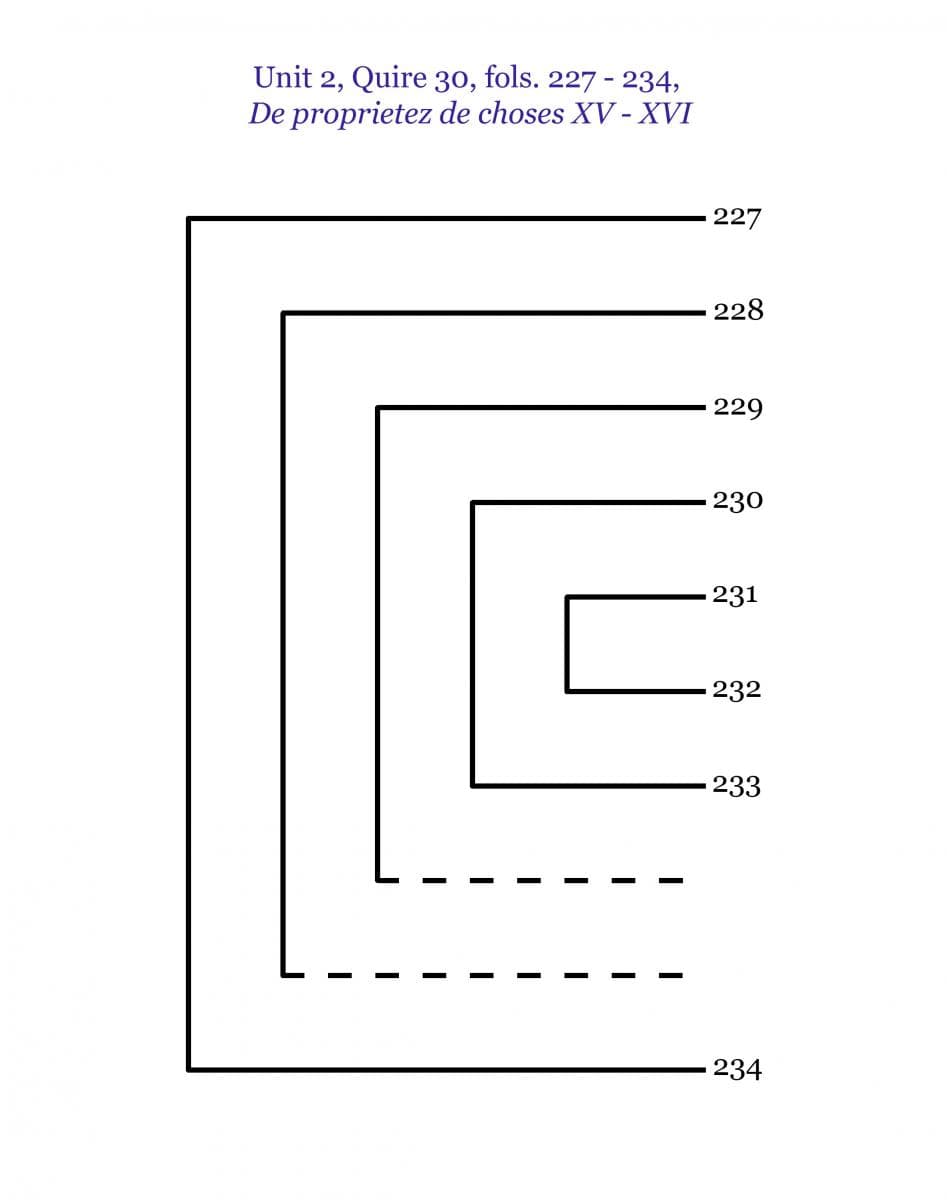The textile linings on the spine were so stiff and brittle that it was possible to break the greater part of them away with a bone folder before the hard glue layer beneath was poulticed with a viscous mixture of Carboxy Methyl Cellulose in purified water. As the glue softened it was carefully scraped away with the edge of a bone folder. The process was repeated until no further glue deposits could be removed.

Cleaning the spine of linings and glue revealed marks of the original sewing stations and the considerable amount of damage to the folds.
Whilst the backs of the quires were still slightly damp from the poulticing of the glue, the sewing threads were cut and the quires eased apart. At this point, the first time the spine-folds had been opened fully since the eighteenth-century, it became clear that the inflexibility of the binding had misled modern scholars concerning the collation. As part of the recording of the structure a new collation diagram was made and the earlier mistakes corrected.

A collation diagram is a useful way to record the physical make-up of the quires. Here, dotted lines indicate that two leaves have been removed between ff. 233 and 234.




